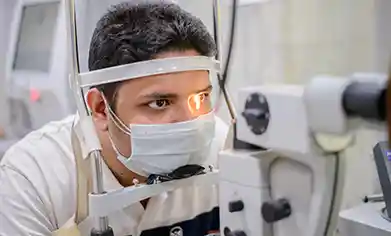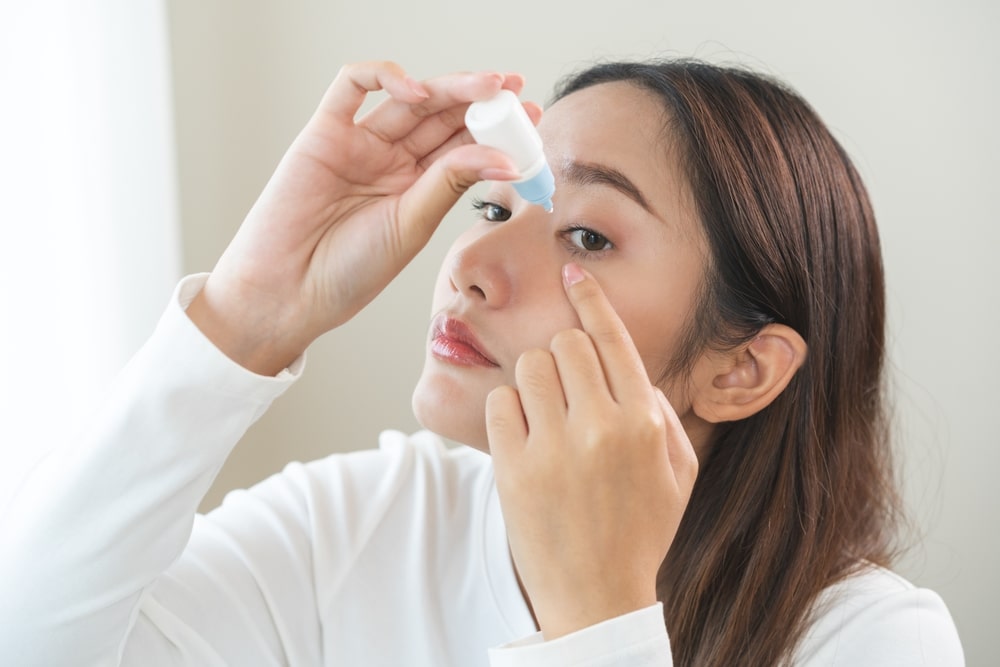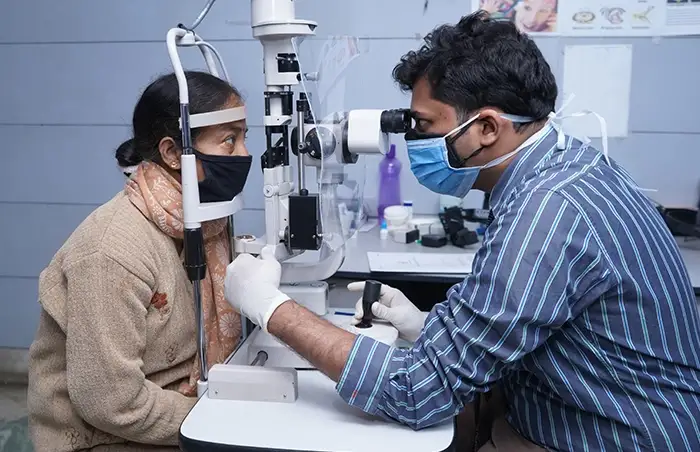Best Eye Drops for Dry Eyes: Expert Recommendations & Product Reviews
Dry eye syndrome has become a growing concern in today’s digital lifestyle, affecting both young professionals and the elderly. Whether you experience a burning sensation after long screen exposure or a persistent gritty feeling in your eyes, finding the best eye drops for dry eyes can offer much-needed relief. At Renuka Eye Institute, our ophthalmologists treat hundreds of dry eye patients every year, and we’re here to share expert insights along with tried-and-tested product recommendations tailored for Indian users.
Understanding Dry Eyes: A Quick Medical Overview
Dry eyes occur when your eyes do not produce enough tears or the tears evaporate too quickly. A healthy tear film includes three layers:
● Lipid Layer – Prevents evaporation
● Aqueous Layer – Provides moisture and oxygen
● Mucin Layer – Helps spread the tear film across the cornea
Any imbalance in these layers can result in dry eye symptoms, which may worsen if not treated early.
Common Causes of Dry Eyes
● Digital Eye Strain: Excessive use of mobile phones, laptops, and televisions
● Environmental Factors: Wind, dust, and pollution
● Aging: Tear production naturally declines with age
● Contact Lens Use: Can reduce oxygen flow and disrupt tear production
● Health Conditions: Diabetes, thyroid issues, rheumatoid arthritis
● Medications: Antihistamines, decongestants, antidepressants, and oral contraceptives
Symptoms to Watch Out For
● Dry eye symptoms range from mild to severe:
- ● Stinging or burning sensation
- ● Redness
- ● Sensitivity to light
- ● Blurred or fluctuating vision
- ● Stringy mucus near the eyes
- ● Feeling of sand or grit in the eyes
- ● Eye fatigue and heaviness
Classification of Eye Drops for Dry Eyes
Understanding the types of eye drops is crucial before making a purchase:
| Category | Purpose | Recommended For |
|---|---|---|
| Artificial Tears | Basic lubrication | Mild to moderate dry eyes |
| Gel Drops | Thicker formulation for longer-lasting relief | Severe dry eye, nighttime use |
| Lipid-based Drops | Restore the oily layer of the tear film | Meibomian gland dysfunction (MGD) |
| Anti-inflammatory Drops | Reduce inflammation in chronic cases | Autoimmune-related or post-surgical cases |
| Preservative-Free Drops | Prevent sensitivity and irritation | Long-term or frequent users |
Top 7 Best Eye Drops for Dry Eyes in India (2025 Expert Picks)
We’ve shortlisted the most effective and widely trusted products used at our clinic and recommended by our specialists:
-
1. Systane Ultra Lubricant Eye Drops
● Type: High-performance artificial tears
● Use Case: All-day hydration, screen-related dryness
● Pros: Dual-layer protection, preservative-free variant
● Cons: Slightly costlier
● Expert Insight: “Excellent for daily use among office workers.”
-
2. Refresh Tears
● Type: Artificial tear substitute
● Use Case: Mild to moderate dryness
● Pros: Gentle, widely available
● Cons: Requires re-application every few hours
● Doctor Tip: “Great for beginners and safe for contact lens users.”
-
3. Lubrex Eye Drops
● Type: Gel-based drop
● Use Case: Night relief for severe dry eye
● Pros: Long-lasting comfort
● Cons: May cause momentary blurring
● Doctor Tip: “Use 15 minutes before bedtime for overnight healing.”
-
4. Hylo Fresh
● Type: Sodium hyaluronate (0.03%) formulation
● Use Case: Advanced dry eye, post-surgery care
● Pros: Preservative-free, sterile packaging
● Cons: High price
● Doctor Tip: “Ideal for LASIK patients or post-cataract recovery.”
-
5. Tears Naturale II
● Type: Hypromellose + Dextran
● Use Case: Mild dry eyes, pollution exposure
● Pros: Budget-friendly
● Cons: Contains preservatives
● Doctor Tip: “Use this only 2–3 times a day, not long-term.”
-
6. i-Dew Eye Drops
● Type: HPMC-based artificial tears
● Use Case: Long computer use, dry climates
● Pros: Affordable, easily available
● Cons: Not strong enough for chronic dry eyes
● Doctor Tip: “Good for college students or junior IT professionals.”
-
7. Optive Fusion
● Type: Dual-mode action (lubrication + osmoprotection)
● Use Case: Chronic dry eyes with inflammation
● Pros: Fast acting, clinically backed
● Cons: Less known brand, inconsistent stock
● Doctor Tip: “A great alternative if others stop working.”
How to Choose the Right Eye Drops
● Frequent Users: Choose preservative-free options like Hylo Fresh or Systane Ultra PF
● Budget-Friendly Option: i-Dew or Tears Naturale II
● Severe Dryness: Lubrex (gel formulation)
● Post-Surgery: Hylo Fresh or Refresh Plus
Real Patient Experiences at Renuka Eye Institute
We conducted a patient follow-up study with over 200 dry eye patients across our outpatient departments. Results after 6 weeks:
- ● 40% reported complete symptom relief
- ● 35% had moderate improvement
- ● 15% experienced mild improvement but required prescription-based intervention
- ● 10% needed additional meibomian gland therapy
Expert Panel Recommendations
Dr. Meena Deshpande, Ophthalmic Surgeon at Renuka Eye Institute:
“Dry eye management begins with identifying the cause. Artificial tears can help, but patients with MGD or systemic diseases like Sjögren’s require advanced care. We offer non-invasive meibomian therapy and customized treatment plans.”
Dr. Rajiv Kulkarni, Senior Eye Specialist:
“It’s important not to self-medicate. Overuse of vasoconstrictor eye drops or preservatives may worsen dryness. Our team prefers starting with mild lubricants and adjusting based on response.”
Daily Habits to Prevent Dry Eyes
- ● Blink consciously during screen time
- ● Follow the 20-20-20 rule (every 20 mins, look at something 20 feet away for 20 seconds)
- ● Stay hydrated (2–3 litres of water/day)
- ● Use anti-glare screens or glasses
- ● Avoid cigarette smoke and dusty areas

When to Visit Renuka Eye Institute
You should consult an ophthalmologist if:
- ● You feel persistent dryness despite using drops
- ● Symptoms include pain, redness, or discharge
- ● Your vision is fluctuating frequently
- ● You have an autoimmune or diabetic condition
- ● You’ve had recent eye surgery
We offer advanced dry eye diagnostics, including:
- ● Meibography
- ● Tear Osmolarity Testing
- ● Schirmer’s Test
- ● Fluorescein Tear Breakup Time
? Call us at +91 7044 019151, +91 8583 945826, +91 9038 597119
? Book an Appointment Online: https://renukaeyeinstitute.org/book-appointment
Frequently Asked Questions (FAQs)
Q1: Can I use eye drops forever?
Yes, but it's best to choose preservative-free drops for long-term use. Consult your doctor periodically.
Q2: Are natural remedies helpful?
Warm compresses and omega-3-rich diets may help, but eye drops are usually more effective for symptom control.
Q3: Is it safe to use drops with contact lenses?
Yes, but choose contact lens-safe formulations like Refresh Tears or Systane Ultra (lens-compatible variant).
Q4: How many times can I use eye drops per day?
Follow your ophthalmologist’s instructions. Typically 2–4 times/day for mild cases, more frequently for severe dryness.
Final Thoughts
Choosing the right eye drop for dry eyes is critical, not only for comfort but also for eye health. From affordable everyday solutions to high-end preservative-free drops, options are available for everyone.
At Renuka Eye Institute , we are committed to helping patients find the best personalized eye care. Don't let dry eyes blur your vision or reduce your quality of life.








